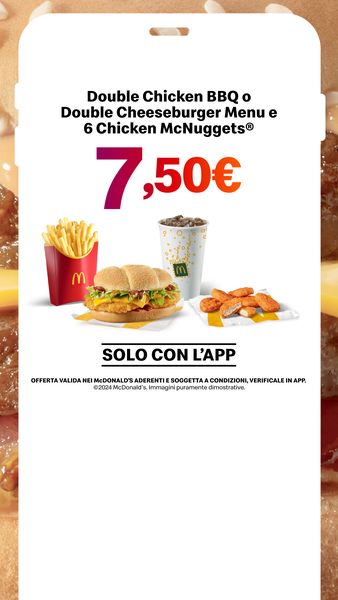- Blog
- Geotargeting Marketing: What It Is and How to Use It for Localized Campaigns
Geotargeting Marketing: What It Is and How to Use It for Localized Campaigns
-
Nikolett Lorincz
- Marketing
- 6 min read
Table of Contents
Ever wonder why your ads aren’t connecting with the right people, even though you’ve invested time and money into your marketing campaigns? If your promotions are missing the mark, it might not be the product or message—it could be the location.
That’s where geotargeting marketing comes in.
By honing in on where your audience is physically located, you can serve them personalized, hyper-relevant content that resonates.
In this article, we’ll show you exactly what geotargeting is, how it works, and how you can use it to boost engagement and sales by reaching the right people, in the right place, at the right time.
Let’s get started!
What is geotargeting?
Geotargeting is the practice of delivering content, ads, or marketing messages to users based on their geographic location.
It allows businesses to reach a specific audience in a particular area—whether that’s by city, state, country, or even a radius as narrow as a few miles. This means that a business in New York City doesn’t waste marketing dollars advertising to someone in London who wouldn’t be interested in a local service.
Think of geotargeting as the tool that lets you say the right thing to the right person, at the right place. Whether it’s showing a coupon to a local shopper or running a specific promotion only in certain regions, geotargeting makes marketing hyper-relevant.
How does geotargeting work?
Geo-targeting uses a combination of data sources to pinpoint a user’s location. The most common data sources for location targeting include:
- IP addresses: Every device connected to the internet has an IP address that reveals a general geographic location.
- GPS signals: On mobile devices, GPS tracking provides extremely precise location data.
- Wi-Fi signals: Similar to GPS, Wi-Fi connections can help identify a user’s location when they’re connected to specific networks.
- Beacons: These are physical devices that send Bluetooth signals to nearby smartphones, typically used in stores for hyperlocal marketing.
Once a user’s location data is identified, you can then serve targeted ads, personalized offers, or content based on where that person is.
What are the benefits of geotargeting in marketing?
Geo-targeting offers several powerful advantages for marketers:
- Highly relevant messaging: When you know where your audience is, you can tailor your messaging to suit local preferences, events, or even weather conditions. For example, promoting cold drinks during a heatwave in one city while focusing on warm beverages in another.
- Cost efficiency: No more wasting ad spend on people who are outside of your service area. Geotargeting ensures your budget is used wisely by focusing only on the most relevant audience.
- Boosted engagement: Location-based content often feels more personal, increasing the likelihood of user engagement, whether that’s clicking on an ad, using a discount code, or visiting a store.
- Improved conversion rates: When marketing efforts are focused on a specific location, the audience is more likely to respond because the offer is relevant to them, leading to higher conversion rates.
- Competitive edge: For local businesses, geotargeting can help you get a step ahead of competitors by allowing you to reach the right customers with timely offers.
How to use geotargeting on your website?
Incorporating geotargeting into your website can elevate the user experience and drive conversions. Here’s how you can do it:
1. Localized content
One of the simplest ways to use geotargeting is by showing different content based on the visitor’s location. This is especially useful for businesses that serve multiple regions with different needs.
For example, if you run an ecommerce clothing store, you can dynamically display products that make sense for local climates. Visitors from colder regions could see winter coats and scarves, while users from warmer areas might be shown beachwear or summer dresses.
This kind of personalization makes the shopping experience more relevant, which not only boosts engagement but can also increase the likelihood of a sale.
2. Personalized promotions
Geotargeting allows you to craft highly specific promotions for visitors based on where they are. Offering location-based deals can be a powerful incentive for users to take action.
For example, BlendJet offers “free shipping to Canada and 10% off,” tailoring their promotion specifically to Canadian customers.

Similarly, Bukvybag promotes its free shipping threshold to certain countries (e.g., Germany), making its offers feel targeted and exclusive to those regions.

These location-based strategies create the impression that the offer is customized just for the user, which improves the shopping experience and encourages conversions.
You can also tie promotions to local events, holidays, or cultural trends to make your offers even more timely and enticing. This approach keeps your campaigns fresh and highly relevant to each specific target audience.
3. Dynamic landing pages
Dynamic landing pages take localization one step further. Instead of showing the same generic landing page to everyone, you can adapt it to suit the visitor’s geographic location.
For instance, if someone from Los Angeles clicks on an ad, they could be directed to a landing page that highlights products popular in California, or references local events or trends.
By aligning the landing page content with the user’s region, you make the experience more personalized and increase the likelihood of conversion. This technique is especially useful for businesses with region-specific services, offers, or messaging that resonates better in certain locations.
4. Localized currency and language
If your business operates internationally, you can’t ignore the importance of localizing currency and language.
Geotargeting allows you to automatically display prices in the visitor’s local currency, eliminating any confusion or barriers to purchase. Nothing makes a potential customer hit the back button faster than seeing prices in an unfamiliar currency.
A great example of this is Lunya, an apparel brand that automatically displays localized currency depending on where the visitor is located. If someone from Hungary visits Lunya’s website, they’ll see prices in Hungarian Forints, while a visitor from the UK will see the pricing in British pounds.

In addition, language localization can significantly enhance the user experience for international visitors. If a potential customer lands on your site and sees content in their native language, they’re much more likely to stay and engage.
For example, if a visitor from Spain visits your website, geotargeting can trigger a version of your site in Spanish, with pricing in euros. This kind of seamless, user-centric experience builds trust and makes global sales smoother.
How to use geotargeting in your marketing campaigns?
Beyond your website, geotargeting can supercharge your overall marketing strategy. Here are some effective ways to use it in campaigns:
1. PPC campaigns
Pay-per-click (PPC) advertising is one of the most popular ways to leverage geotargeting.
Platforms like Google Ads allow you to fine-tune your targeting to specific geographic areas, from entire countries down to zip codes or a narrow radius around a physical location. This means that if you’re a local business, you won’t waste ad dollars showing your ads to people who are too far away to visit your store.
For example, a local pizza shop could run a geotargeted ad campaign that’s only shown to people within a 5-mile radius, ensuring that only potential customers in the vicinity see the promotion.
You can even use geotargeting to tailor the message of your ad campaign based on local trends or events, giving your ad campaigns a personal touch that resonates with the audience.
2. Social media ads
Social media platforms like Instagram and Facebook are prime territories for location-based ads.
By using geotargeting on these platforms, you can also promote local events, services, or time-sensitive offers directly to users in specific areas.
One great example of geotargeting in action is McDonald’s. Check out how they target ads based on countries such as Hungary, France, and Italy. They create location-specific promotions in the local language, highlighting menu items or deals that resonate with that particular market.
Geotargeting is also useful if you’re running an event or have a physical store and want to drive foot traffic.
For instance, a concert venue might promote an upcoming show by targeting users within 25 miles of the city where the event is being held. By narrowing the target audience based on geography, you only deliver ads to people most likely to attend, making it more effective and cost-efficient.
3. SMS marketing
If you’ve got a list of mobile numbers from customers who have opted in, SMS marketing is another powerful way to use geotargeting. SMS campaigns are known for their high open rates, and when combined with location-based audience targeting, they become even more impactful.
For example, a restaurant could send out a text message with a “Buy one, get one free” lunch offer to customers who are currently near their location.
The key here is the immediacy—because text messages are often read within minutes, this tactic can drive instant traffic and increase sales right when you need it most.
4. Email campaigns
Geotargeting can also work wonders for your email marketing efforts. By segmenting your email list based on users’ geographic or business locations, you can send them more relevant offers, announcements, or event invitations that align with their region.
For example, if you’re launching a new café, you can promote it specifically to subscribers who live in that area, ensuring your message reaches people who are most likely to visit.

This kind of targeted outreach makes your email feel personal and relevant, increasing the chances that your audience will engage with the content.
You can also take it a step further by timing your promotions to coincide with local events, holidays, or regional trends, ensuring your emails land when they’re most relevant. This approach not only increases open and click-through rates but also fosters a stronger connection with your target audience.
5. Mobile push notifications
If you have a mobile app, push notifications are a great way to use geotargeting for real-time engagement. These notifications can be triggered based on the user’s current location, delivering timely offers or updates when they’re most relevant.
For instance, a coffee shop app might send a push notification offering a discount when a user is nearby. The immediacy of this tactic encourages customers to stop in and take advantage of the offer while they’re still in the area.
You can also use it for location-based reminders, such as reminding customers of an appointment or event near their location.
FAQ
What is geo-targeting in marketing?
Geo-targeting in marketing refers to the practice of delivering specific content, advertisements, or offers to users based on their specific location. This strategy allows marketers to customize their messaging to better suit the preferences, needs, or habits of people in a particular area.
What is an example of geo-marketing?
A classic example of geo-marketing is when a fast-food chain uses mobile ads to target users who are near one of their locations. When someone is close by, they might receive a push notification or a social media ad offering a discount on a meal.
Does geotargeting invade user privacy?
No, geotargeting typically relies on anonymous data such as IP addresses or location permissions that users voluntarily give to apps. Businesses need to comply with data privacy regulations like GDPR and ensure they are transparent about how they collect and use location data.
Is geotargeting only useful for local businesses?
While local businesses benefit the most, larger brands can also use geotargeting for regional campaigns, international sales, or even running experiments in very specific locations or markets.
Can I use geotargeting for organic content?
Yes! Geotargeting isn’t just for paid ads. You can use it to customize organic content on your website, offer personalized recommendations, or even adjust SEO strategies based on regional trends.
Wrapping up
Geotargeting is more than just a buzzword—it’s a highly effective strategy for delivering personalized, relevant content to the right audience at the right time.
By understanding how geotargeting works and leveraging it across your marketing channels, you can increase engagement, improve ROI, and create a more personalized experience for your customers.
Whether you’re a local business or a global brand, geotargeting offers the precision and efficiency modern marketers need to stand out in a crowded digital space.
If you’d like to get started with geotargeting on your website, give OptiMonk popups a try.
Migration has never been easier
We made switching a no-brainer with our free, white-glove onboarding service so you can get started in the blink of an eye.

What should you do next?
Thanks for reading till the end. Here are 4 ways we can help you grow your business:
Boost conversions with proven use cases
Explore our Use Case Library, filled with actionable personalization examples and step-by-step guides to unlock your website's full potential. Check out Use Case Library
Create a free OptiMonk account
Create a free OptiMonk account and easily get started with popups and conversion rate optimization. Get OptiMonk free
Get advice from a CRO expert
Schedule a personalized discovery call with one of our experts to explore how OptiMonk can help you grow your business. Book a demo
Join our weekly newsletter
Real CRO insights & marketing tips. No fluff. Straight to your inbox. Subscribe now
Nikolett Lorincz
- Posted in
- Marketing
Partner with us
- © OptiMonk. All rights reserved!
- Terms of Use
- Privacy Policy
- Cookie Policy
Product updates: January Release 2025











